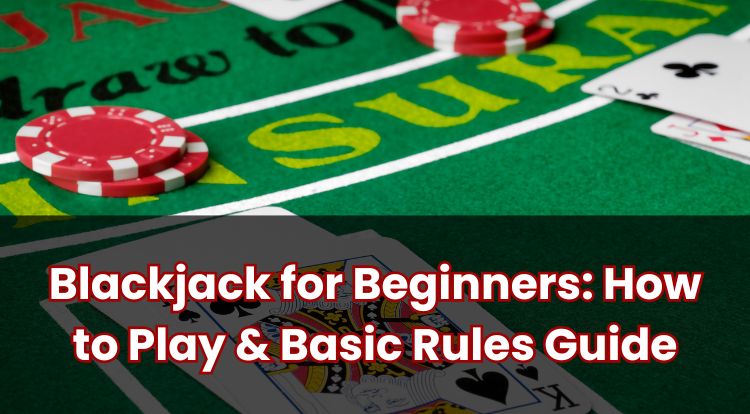Blackjack Strategy Cards: Can You Use Them in Casinos?
If you have ever heard of a “strategy card” for blackjack, you might be curious about what it is and how people use it. These simple cards are designed to help players understand which moves to make when playing blackjack, but not everyone knows where or when they can be used.
Before sitting down at a casino table, or even playing online, people sometimes wonder if bringing a strategy card is allowed, or if it could get them into trouble. There are also different rules at casinos, and knowing what is permitted might be helpful for anyone looking to play within the rules. Read on to learn more.
What Are Blackjack Strategy Cards?
Blackjack strategy cards are printed guides that show the recommended action for common situations at the table. They map your hand total against the dealer’s face-up card and point to options such as hit, stand, split, or double, depending on the combination in front of you.
The layout is a simple chart: your total is listed on one axis, the dealer’s upcard on the other, and the square where they meet gives a suggested move. These suggestions are based on probability and expected outcomes, calculated from the rules of the game rather than guesswork.
In the UK, many of these cards are pocket-sized and sometimes laminated so they can be read quickly and reused. Because they are just printed references, they do not rely on devices or software, which matters in places where electronic aids are restricted.
Online, you may find digital charts or in-game help that explain rules and show how different decisions affect the long-term house edge for a particular set of rules. The level of detail varies by site, but the aim is the same: to present the basic strategy for the version of blackjack you are playing.
Are Blackjack Strategy Cards Allowed in Casinos?
In many UK casinos, a basic printed strategy card is allowed at the table. Staff are familiar with these charts and may simply check that what you are using is a static reference rather than a device that stores notes or performs calculations. If a card is paper or laminated plastic, it is usually treated as acceptable.
House rules can differ. Some venues prefer players to keep the game moving and may ask you not to consult a card on every hand. If you want time to think, you might be asked to step back from the table to review your chart, then return to play. Electronic aids, including mobile phones, tablets, apps, or smartwatches, are commonly restricted during live games.
For online blackjack, the approach is often more flexible. You play at your own pace and can refer to materials off-screen, and many platforms include rule summaries or advice inside the game itself.
The regulator does not ban printed strategy charts, but it does require fair and transparent play. If you are unsure, you could ask a member of staff or check the venue’s posted rules before you begin.
Why Do Some Casinos Allow Strategy Cards While Others Do Not?
Casinos set their own house rules to shape the experience at their tables. Some welcome printed strategy cards because they see them as learning tools that help players make informed choices. Others prefer a quicker tempo and may discourage frequent reference to a chart if it slows play or distracts other guests.
Fair play is another consideration. Staff need to be confident that no one is using hidden devices, taking notes on past hands, or engaging in any practice that breaches policy. A printed chart of general information is very different from tools that collect data or communicate with others.
Online, these concerns are less about pace and more about software. Many platforms allow you to read outside materials while you play, and some display guidance on-screen. External automated tools, however, are often prohibited in the site’s terms because they can interfere with the integrity of the game.
If you want to avoid confusion, a quick chat with a dealer or pit manager, or a glance at the posted rules, might tell you what is acceptable at that venue.
How Do Casinos View Strategy Cards Compared to Other Aids?
Most casinos treat a printed strategy card as a static reminder of public information. It does not track results, perform calculations, or communicate, and it does not change the odds. That is why it is often viewed differently to electronic aids.
Devices that can store data or compute outcomes, such as phones, calculators, earpieces, or hidden receivers, are not allowed at live tables. These items can undermine fair play and are likely to be stopped by staff. Even if a phone is only being used to view a chart, many venues will still ask you not to use it at the table to keep rules simple and consistent.
In online games, operators often provide on-screen help and clear rule explanations. Using external software to analyse hands in real time is usually restricted by the platform’s terms and conditions, and accounts can be reviewed if unfair tools are detected.
Across both settings, the principle is straightforward: printed references are generally fine, while devices that calculate, communicate, or record are not.
Can Using a Strategy Card Get You Into Trouble?
Using a basic printed blackjack strategy card in a UK casino is unlikely to cause issues. Dealers and floor staff see them regularly and usually accept them as learning aids, provided they do not slow the game or distract other players.
That said, house rules apply. A venue can ask you to put the card away, to check it away from the table, or to rely on your memory if the table is busy. Electronic devices at live tables are a common red flag and can lead to questions or requests to stop using them.
Online casinos are more relaxed about references you read privately, but there is a firm line against automated assistance or software that makes decisions for you. Platforms monitor play for anything that breaches their terms.
**The information provided in this blog is intended for educational purposes and should not be construed as betting advice or a guarantee of success. Always gamble responsibly.
*All values (Bet Levels, Maximum Wins etc.) mentioned in relation to these games are subject to change at any time. Game features mentioned may not be available in some jurisdictions.




